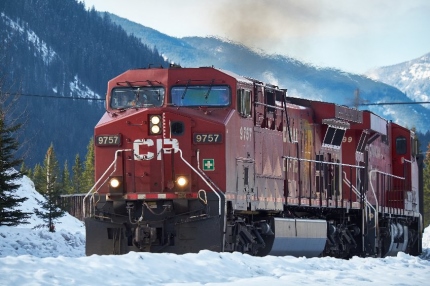There are two big forces at work that show why the inflation beast will not be easy to tame for the Federal Reserve.
First, although overall consumer demand is slowing, it still remains strong in many sectors. Second, many supply chain woes are still resolved.
Supply chain disruptions due to the coronavirus pandemic were expected to gradually subside as global restrictions were lifted. Yet, the supply chain situation has actually worsened because of increased geopolitical risk and ongoing lockdowns and restrictions due to China’s zero-tolerance COVID policy.

My contacts in the logistics industry tell me that supply chain problems may not be resolved until mid-decade… and with de-globalization fully underway, these some of these headaches may never be completely resolved!
In this brave new deglobalized world, you want to own sectors and companies that can prosper under these conditions.
One such sector—and one totally ignored by Wall Street—is the rail sector. Moving goods by rail is approximately four times more energy efficient (per ton-mile of freight) moving by truck. As inflation rises, the efficiency of railroads for moving freight is looking more and more attractive…and my favorite stock in the sector, Canadian Pacific Railway (CP), comes with another big plus.
Canadian Pacific Railway
Think about this…as the world continues to isolate Russia, Canada offers the best alternatives for many of the commodities and products most closely associated with Russia, including Canadian grains, potash, fertilizer, oil, coal and natural gas. In fact, even before the Ukraine invasion, CP was shipping a lot of potash for export to China.
Canadian Pacific offers the best rail network coverage from one end of North America to the other. Last December, the company completed its acquisition of Kansas City Southern Railway, subject to final regulatory approval. This acquisition creates the first rail network that spans Canada, the U.S. and Mexico—which will provide the company with a competitive market reach in the quickly evolving supply chain.
Here is just one example that Canadian Pacific has analyzed completely: in the freight markets connecting Mexico to the U.S. Midwest, each and every day prior to Canadian Pacific’s merger with Kansas City Southern, an armada of trucks set out to connect auto parts and auto assembly plants spread across the Midwest and Mexico.
These long hauls are naturally opportune situations for transport by rail. But since no single railroad connected these regions, manufacturers were forced to rely heavily on trucks. The merged Canadian Pacific rail network will be able to convert to rail shipments the 64,000 truck shipments that currently clog public highways and border crossings as they move between Mexico and the Great Lakes region.
Add to all of this the company’s sharp management.
The company’s change in fortunes began in 2012 with the appointment of railroading legend Hunter Harrison as CEO. Harrison and his successor, rail operations expert Keith Creel (who worked alongside Harrison for 20 years), have between them taken Canadian Pacific from having of the worst Class I railroad profit margins to among the best. Creel has further infused the company’s culture with precision-scheduled railroading principles, which is largely behind its progress.
CP’s Bright Future
Keep this one important fact in mind when thinking about rail stocks as an investment: the network of track and assets already in place because of North American Class I railroad companies—designated as such based on their revenue—is essentially impossible to replicate.
Sounds like a classic Warren Buffett moat to me. No wonder his Berkshire Hathaway (BRK.B or BRK.A) owns BNSF Railway.
I expect Canadian Pacific’s 2023 operating ratio to improve—volumes should have rebounded in the second half of 2022 thanks to recovering grain shipments as well as auto carloads. Pricing power should remain healthy as well. The late-2022 Canadian grain harvest is currently expected to be much better than last year’s—a key driver of carload volume recovery by late 2022 through early 2023.
Morningstar says that: “Longer term, we believe CP’s pricing power will prove sound (above rail inflation), as will its ability to neutralize diesel price shocks via surcharges.”
The publication adds: “CP is an incredibly well-run railroad with a highly talented leadership team and an excellent track record in terms of efficiency improvement over the past decade, thus we consider deal risk [Kansas City Southern] to be relatively modest. We also agree that the merger makes sense from a strategic perspective and believe the combined railroads will forge meaningful opportunities on the revenue front, thanks to adding new seamless single-line services.”
A nice summation that I totally agree with.
Canadian Pacific stock has handily outperformed the S&P 500 year-to-date, rising about 2% versus a loss of nearly 20% for the S&P 500. CP shares are a buy on any stock market weakness, on worries about the economy, anywhere in the low-to-mid $70s.





